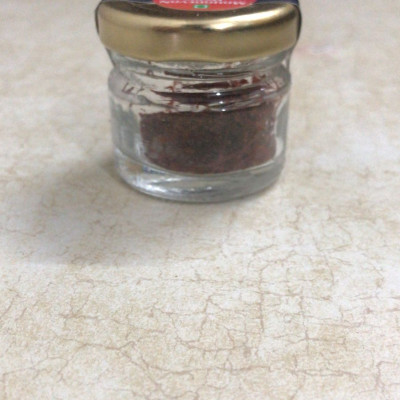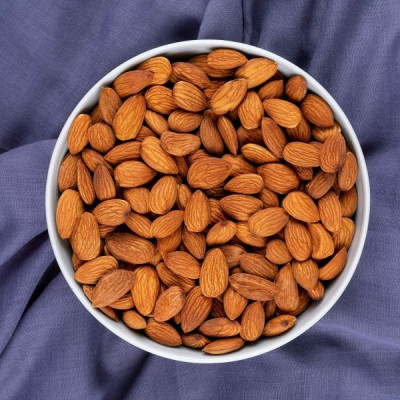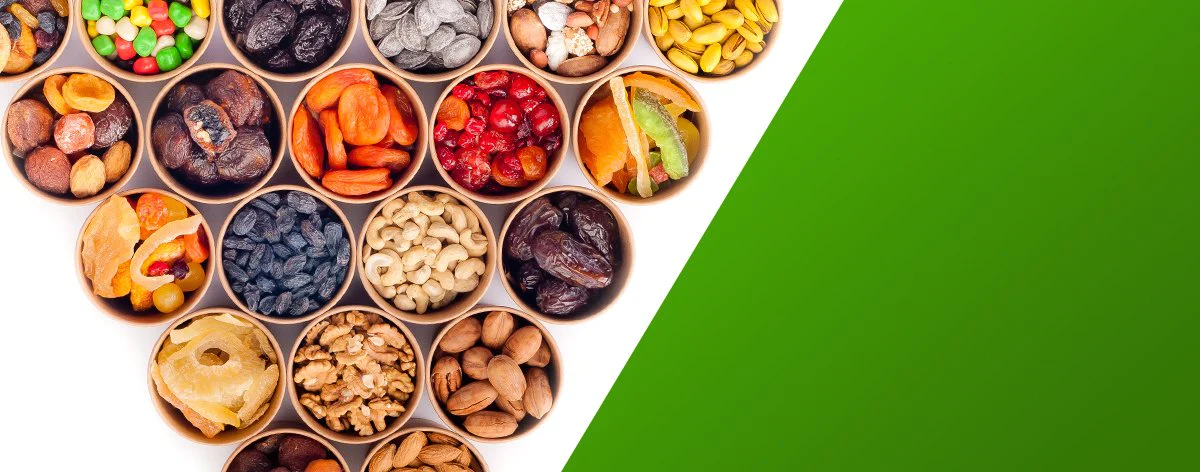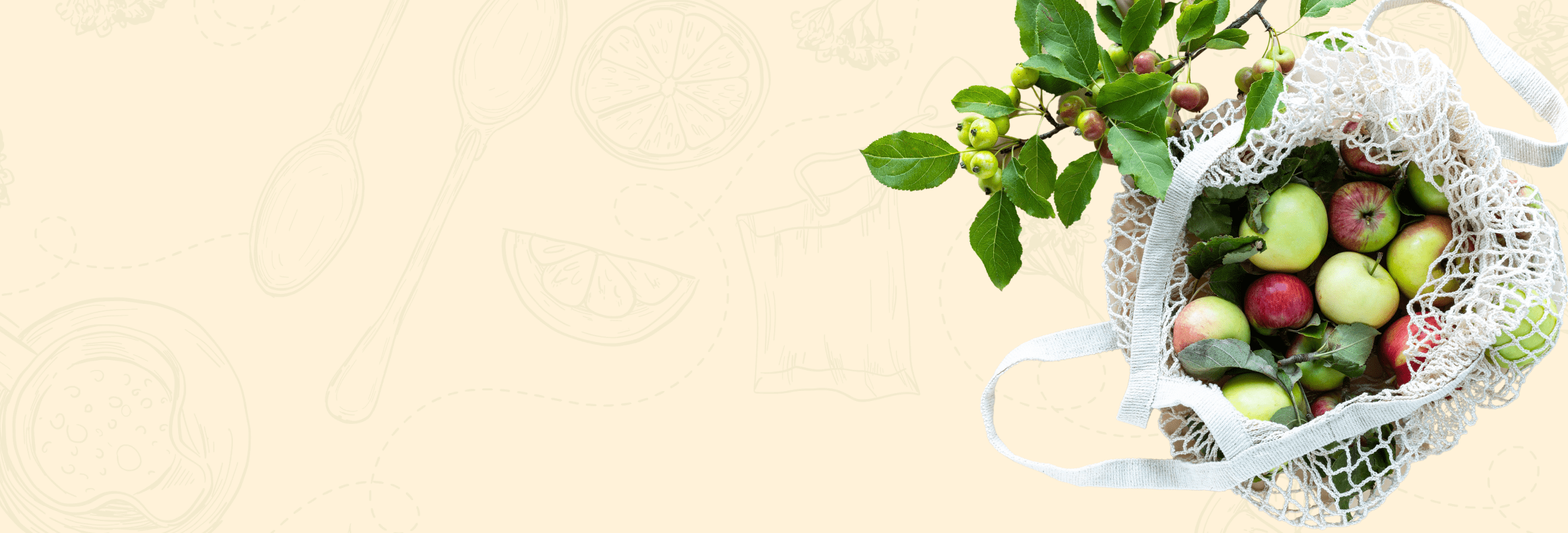Fruits
Unveiling the Grand Nain: Exploring the Exquisite World of Cavendish Bananas

INTRODUCTION
Introducing Cavendish Bananas, the epitome of tropical indulgence. With their vibrant yellow peel and enticing aroma, Cavendish Bananas are a delight for both the eyes and the taste buds. Each bite reveals a creamy, smooth texture that melts in your mouth, leaving you craving for more. Known for their naturally sweet flavor, these bananas offer a perfect balance of sweetness and subtle tanginess.
Their versatility is unmatched, making them a beloved choice for a quick snack, smoothies, baking, or even as an ingredient in savory dishes. Cavendish Bananas are not only a delicious treat but also a nutritional powerhouse. Packed with essential vitamins, minerals, and dietary fiber, they contribute to a well-balanced diet and promote overall health. Whether enjoyed on their own or used in various culinary creations, Cavendish Bananas are a tropical treasure that brings joy to every palate. Indulge in the tropical sweetness of Cavendish Bananas and experience a tropical paradise with every bite.
Cavendish banana Production in India by state:
- Maharashtra: Maharashtra is one of the major banana-producing states in India. It has favorable climatic conditions for banana cultivation. Regions like Jalgaon, Ahmednagar, and Aurangabad are known for their Cavendish banana production.
- Gujarat: Gujarat is another significant producer of Cavendish bananas in India. The state's banana cultivation is concentrated in regions such as Valsad, Navsari, and Surat.
- Tamil Nadu: Tamil Nadu is known for its extensive banana cultivation, including Cavendish bananas. The districts of Theni, Tiruchirappalli, and Erode are major banana-growing regions in the state.
- Andhra Pradesh: Andhra Pradesh is one of the leading banana-producing states in India. The Krishna, Guntur, and East Godavari districts are known for their Cavendish banana production.
- Karnataka: Karnataka has a significant banana industry, with Cavendish bananas being one of the prominent varieties grown. The districts of Chamarajanagar, Hassan, and Tumkur are important banana-growing regions in the state.
- Kerala: Kerala is known for its diverse agricultural practices, including banana cultivation. The regions of Thrissur, Kottayam, and Malappuram have significant Cavendish banana production.
- West Bengal: West Bengal is one of the major banana-producing states in eastern India. The districts of Hooghly, Nadia, and Murshidabad are known for their Cavendish banana cultivation.
- Telangana: Telangana is emerging as a significant banana-growing state in India. The districts of Khammam, Mahabubnagar, and Karimnagar have notable Cavendish banana production.
- Bihar: Bihar has a substantial banana industry, with Cavendish bananas being among the varieties grown. The districts of Vaishali, Muzaffarpur, and Samastipur are known for their banana cultivation.
- Uttar Pradesh: Uttar Pradesh is another state where Cavendish bananas are cultivated. The districts of Gorakhpur, Ballia, and Siddharthnagar have notable banana production.
Cavendish banana production by country:
- Ecuador: Ecuador is one of the leading producers of Cavendish bananas. The country has a favorable climate for banana cultivation, particularly in the provinces of Guayas and Los Rios.
- Philippines: The Philippines is another major producer of Cavendish bananas. The country's largest banana-producing regions include Davao, Northern Mindanao, and Soccsksargen.
- Costa Rica: Costa Rica is known for its extensive banana plantations, with Cavendish bananas being a significant part of its agricultural exports. The country's banana production is concentrated in the Limón and Puntarenas provinces.
- Colombia: Colombia is a prominent producer of Cavendish bananas, with large plantations in regions such as Urabá, Magdalena, and La Guajira.
- Guatemala: Guatemala has a significant banana industry, and Cavendish bananas are among the varieties grown there. The production is concentrated in departments like Izabal and Retalhuleu.
- Honduras: Honduras is another Central American country known for its Cavendish banana production. The main banana-growing regions include Cortés, Atlántida, and Colón.
- Panama: Panama's banana industry focuses on Cavendish bananas, primarily grown in the Bocas del Toro and Chiriquí provinces.
- Thailand: Thailand has a well-established banana industry, and Cavendish bananas are one of the main cultivars. The provinces of Chachoengsao, Chanthaburi, and Prachuap Khiri Khan are major banana-growing areas.
- Australia: Australia produces Cavendish bananas in several regions, including Queensland, New South Wales, and Western Australia.
- China: China has been increasing its banana production in recent years, with Cavendish bananas being one of the varieties grown. Provinces like Guangdong, Guangxi, and Yunnan are known for banana cultivation.
Appearance of Grand Nain Cavendish bananas:
- Size: Grand Nain bananas are generally large-sized fruits. They can grow up to 6 to 9 inches in length, making them longer than many other banana varieties.
- Shape: These bananas have a classic elongated shape, typical of the Cavendish variety. They are slightly curved, resembling the traditional banana shape that most people are familiar with.
- Color: When fully ripened, the skin of Grand Nain bananas turns a bright yellow color. This vibrant yellow hue is a visual indicator of the fruit's maturity and readiness for consumption.
- Texture: The skin of Grand Nain bananas is smooth and thin, making it easy to peel. The flesh inside is soft and creamy, offering a delightful texture when eaten.
- Aesthetic Appeal: Grand Nain bananas have an aesthetically pleasing appearance due to their uniformity and consistent shape. They are often preferred by consumers for their attractive appearance.
- Clustering: Grand Nain banana plants produce bunches or clusters of bananas, known as hands. These hands typically consist of several individual bananas attached to a central stalk called the rachis.
- Tapered Ends: The ends of Grand Nain bananas are usually tapered. The tip of the banana narrows down gradually, forming a gentle point.
- Lack of Seeds: Like other Cavendish banana varieties, Grand Nain bananas are seedless. This means that the fruit does not contain any noticeable seeds, enhancing the eating experience by providing a smooth, seed-free texture.
- Ripening: When Grand Nain bananas ripen, the skin develops characteristic brown speckles or spots, indicating that the fruit is reaching its peak sweetness and flavor.
- Packaging: Due to their consistent size and appearance, Grand Nain bananas are often selected for commercial packaging. They are carefully graded, sorted, and packaged for distribution in supermarkets and grocery stores worldwide.
Flavor of the Grand Nain variety of Cavendish bananas:
- Sweetness: The flavor of Grand Nain bananas is characterized by its natural sweetness. When fully ripe, the fruit offers a delightful level of sweetness that is enjoyed by banana enthusiasts around the world.
- Creamy Texture: Grand Nain bananas have a smooth and creamy texture that further enhances their flavor experience. The soft flesh melts in your mouth, providing a luscious and satisfying sensation with every bite.
- Subtle Tanginess: In addition to their sweetness, Grand Nain bananas may also exhibit a subtle tanginess. This gentle tangy note adds a pleasant and refreshing twist to the overall flavor profile, balancing the sweetness and adding depth to the taste.
- Mild and Mellow: Grand Nain bananas have a mild and mellow flavor profile that appeals to a wide range of palates. The taste is not overpowering or overly intense, making them enjoyable for individuals who prefer a more delicate banana flavor.
- Balanced Flavor: The flavor of Grand Nain bananas is well-balanced, combining the right amount of sweetness, creaminess, and subtle tanginess. This balance ensures a harmonious taste experience that is both satisfying and comforting.
- Natural Banana Essence: Grand Nain bananas possess the characteristic essence of a classic banana flavor. Their taste embodies the quintessential banana essence that people have come to associate with this beloved fruit.
- Versatile Culinary Uses: The mild and balanced flavor of Grand Nain bananas makes them versatile in culinary applications. They can be used in a wide array of recipes, from baking banana bread and muffins to adding a fruity twist to smoothies, shakes, and desserts.
- Enhances Other Flavors: The mild flavor of Grand Nain bananas acts as an excellent base for incorporating other ingredients and flavors. They complement and enhance the taste of various ingredients, making them a popular choice in fruit salads, yogurt parfaits, and tropical fruit-based dishes.
- Kid-Friendly Appeal: The flavor of Grand Nain bananas is often well-received by children due to its natural sweetness and gentle taste. They can be a nutritious and delicious snack option for kids, encouraging healthy eating habits.
- Enjoyed Fresh or Cooked: Grand Nain bananas are equally enjoyable when consumed fresh or cooked. Whether eaten as a standalone snack, blended into smoothies, or used as an ingredient in baked goods, their flavor remains pleasing and versatile across different culinary preparations.
Versatility of the Grand Nain variety of Cavendish bananas:
- Culinary Applications: The Grand Nain banana is incredibly versatile in the kitchen, lending itself to a wide range of culinary applications. It can be used in both sweet and savory dishes, offering endless possibilities for creative recipes.
- Fresh Consumption: Grand Nain bananas are delicious when eaten fresh and can be enjoyed as a quick and nutritious snack. They provide a natural energy boost and satisfy cravings for a sweet and satisfying treat.
- Smoothies and Shakes: Grand Nain bananas are an excellent addition to smoothies and shakes, contributing a creamy texture and natural sweetness. They blend well with other fruits, yogurt, milk, or plant-based alternatives, creating a nourishing and refreshing beverage.
- Baking: The versatility of Grand Nain bananas shines in baked goods. They are commonly used in banana bread, muffins, cakes, cookies, and pancakes, adding moisture, sweetness, and flavor to these delightful treats.
- Frozen Desserts: Grand Nain bananas are a key ingredient in homemade ice cream, sorbets, and ice creams (plant-based ice creams). When frozen and blended, they create a creamy and smooth base for various frozen desserts.
- Dessert Toppings: Sliced or mashed Grand Nain bananas can be used as a topping for desserts such as pies, tarts, and cheesecakes. They add natural sweetness and visual appeal to the final presentation.
- Fruit Salads: Grand Nain bananas can be sliced and added to fruit salads, combining well with other fruits like berries, citrus, melons, and tropical fruits. They add a creamy element and enhance the overall flavor profile of the salad.
- Breakfast Dishes: Incorporating Grand Nain bananas into breakfast dishes is a popular choice. They can be sliced and added to cereal, oatmeal, yogurt, or enjoyed with nut butter on toast for a wholesome and satisfying morning meal.
- Savory Dishes: While primarily associated with sweet preparations, Grand Nain bananas can also be used in savory dishes. They can be grilled, roasted, or sautéed and served alongside meats, curries, stir-fries, or as a unique addition to salads.
- Dehydrated Snacks: Grand Nain bananas can be dehydrated or dried to create banana chips. These chips are a popular and healthy snack option, perfect for on-the-go consumption or as a crunchy topping for yogurt, cereals, or granola.
Nutritional benefits of the Grand Nain variety of Cavendish bananas:
- Rich in Potassium: Grand Nain bananas are an excellent source of potassium. Potassium is an essential mineral that plays a vital role in maintaining proper heart function, regulating blood pressure, and supporting overall cardiovascular health.
- High in Dietary Fiber: Grand Nain bananas are rich in dietary fiber, which promotes healthy digestion and aids in maintaining regular bowel movements. Including fiber-rich foods like Grand Nain bananas in your diet can contribute to improved digestive health.
- Vitamin C: Grand Nain bananas contain a good amount of vitamin C, which is an important antioxidant that supports immune function, promotes collagen production for healthy skin, and helps protect the body against harmful free radicals.
- Vitamin B6: Grand Nain bananas are a significant source of vitamin B6, also known as pyridoxine. Vitamin B6 is involved in various bodily functions, including the production of red blood cells, brain development, and function, and the metabolism of proteins, carbohydrates, and fats.
- Natural Energy Boost: Grand Nain bananas are a great source of natural energy due to their carbohydrate content. The natural sugars in bananas, such as fructose and glucose, provide a quick and sustained energy release, making them an ideal snack option for physical activity or as a midday pick-me-up.
- Low in Fat and Cholesterol: Grand Nain bananas are naturally low in fat and cholesterol. Incorporating them into a balanced diet can be beneficial for individuals looking to manage their weight or maintain heart health.
- Contains Essential Minerals: In addition to potassium, Grand Nain bananas contain other essential minerals like magnesium, manganese, and copper. These minerals play important roles in various bodily functions, including nerve function, bone health, and antioxidant activity.
- Natural Electrolytes: Grand Nain bananas contain electrolytes such as potassium, magnesium, and sodium. These electrolytes are crucial for maintaining proper fluid balance, muscle function, and nerve signaling in the body.
- Source of Antioxidants: Grand Nain bananas contain several antioxidants, including dopamine and catechins. These antioxidants help protect the body's cells from oxidative stress and may have beneficial effects on overall health.
- Gluten-Free and Allergen-Free: Grand Nain bananas are naturally gluten-free and allergen-free, making them a suitable choice for individuals with gluten intolerance or various food allergies.
Health benefits of the Grand Nain variety of Cavendish bananas
- Heart Health: Grand Nain bananas are rich in potassium, which supports heart function and helps regulate blood pressure, contributing to a healthy cardiovascular system.
- Digestive Health: The dietary fiber content in Grand Nain bananas promotes healthy digestion, aids in maintaining regular bowel movements, and supports overall digestive health.
- Immune Support: Grand Nain bananas contain vitamin C, an antioxidant that supports immune function, helps fight off infections, and promotes overall immune system health.
- Energy Boost: Grand Nain bananas provide a natural energy boost due to their carbohydrate content, making them an excellent choice for quick and sustained energy release.
- Nutrient-Rich: Grand Nain bananas are packed with essential vitamins and minerals, including vitamin B6, which supports brain function, red blood cell production, and metabolism.
- Bone Health: The minerals present in Grand Nain bananas, such as magnesium and manganese, contribute to bone health and help maintain strong and healthy bones.
- Antioxidant Protection: Grand Nain bananas contain antioxidants like dopamine and catechins, which help protect the body's cells from oxidative stress and may have beneficial effects on overall health.
- Weight Management: With their low fat and cholesterol content, Grand Nain bananas can be included in a balanced diet for individuals looking to manage their weight.
- Natural Electrolytes: Grand Nain bananas provide natural electrolytes, such as potassium and magnesium, which help maintain proper fluid balance, muscle function, and nerve signaling in the body.
- Gluten-Free and Allergen-Free: Grand Nain bananas are naturally gluten-free and allergen-free, making them a suitable choice for individuals with gluten intolerance or various food allergies.
Availability of the Grand Nain variety of Cavendish bananas
- Global Availability: Grand Nain bananas are widely available worldwide, making them accessible to consumers in various countries and regions.
- Commercial Production: Grand Nain bananas are commercially cultivated in large quantities due to their popularity and demand, ensuring a steady supply in the market.
- Supermarkets and Grocery Stores: Grand Nain bananas can be found in most supermarkets and grocery stores, making them easily accessible for consumers during regular shopping trips.
- Local Markets: In addition to larger retail establishments, Grand Nain bananas are often available in local markets and produce stands, offering consumers a convenient option for purchasing fresh produce.
- Online Retail: With the rise of e-commerce, Grand Nain bananas can also be purchased online through various platforms, allowing consumers to have them delivered to their doorstep.
- Year-Round Availability: Grand Nain bananas are available throughout the year, offering consistent access to this popular banana variety, regardless of the season.
- Tropical and Subtropical Regions: Grand Nain bananas are commonly grown in tropical and subtropical regions, where the climate is conducive to banana cultivation. This helps ensure a continuous supply of the fruit.
- Imported Varieties: In regions where Grand Nain bananas are not grown locally, they are often imported from countries where they are commercially cultivated, allowing consumers to enjoy them even in non-producing regions.
- Frozen and Dried Forms: Grand Nain bananas may also be available in frozen or dried forms, providing alternatives for those seeking longer shelf life or unique culinary applications.
- Local Farms and Plantations: In some areas, Grand Nain bananas can be sourced directly from local farms and plantations, providing consumers with the opportunity to support local agriculture and experience freshly harvested produce.
Storage and shelf life of the Grand Nain variety of Cavendish bananas
- Ripen at Room Temperature: Grand Nain bananas are typically purchased while still green. To ripen them, keep them at room temperature, away from direct sunlight. This allows the bananas to gradually ripen and develop their characteristic yellow color.
- Separate from Other Fruits: To prevent premature ripening and spoilage, it's advisable to store Grand Nain bananas separately from other fruits. Bananas release a natural ripening agent called ethylene, which can accelerate the ripening process of neighboring fruits.
- Refrigerate Once Ripe: Once Grand Nain bananas have reached the desired level of ripeness, you can store them in the refrigerator to extend their shelf life. The skin may turn brown in the fridge, but the fruit inside remains fresh.
- Protect from Bruising: Handle Grand Nain bananas with care to prevent bruising, as bruised areas can deteriorate quickly and spoil. Avoid placing heavy objects on top of them or stacking them excessively.
- Avoid Extreme Temperatures: Avoid exposing Grand Nain bananas to extreme temperatures. Extreme heat can cause them to ripen too quickly, while extreme cold can cause the fruit to darken and affect the taste and texture.
- Check for Ripeness: Check the bananas daily for ripeness. When the skin turns yellow with a few brown spots, they are usually at their optimal eating stage. Adjust your consumption or storage plans accordingly.
- Shelf Life: At room temperature, Grand Nain bananas can typically stay fresh for about 3 to 7 days, depending on their initial ripeness. When refrigerated, they can last for an additional 1 to 2 weeks, with the skin turning brown but the fruit remaining edible.
- Freezing Option: If you have overly ripe Grand Nain bananas that you can't consume in time, consider freezing them. Peel the bananas, slice them, and place them in an airtight container or freezer bag. Frozen bananas can be used later for smoothies, baking, or making banana-based desserts.
Q1: Which countries import the Grand Nain variety of Cavendish bananas?
A1: The Grand Nain variety Cavendish bananas are widely imported by countries such as the United States, Europe (including the United Kingdom, Germany, and France), Canada, Middle Eastern countries (such as Saudi Arabia and the United Arab Emirates), and various Asian markets.
Q2: What is the export volume of Grand Nain bananas?
A2: The exact export volume of Grand Nain bananas varies from year to year and is influenced by factors such as weather conditions and market demand. However, it is one of the most popular and commercially cultivated banana varieties, and significant quantities are exported globally.
Q3: What are the export regulations for the Grand Nain variety of Cavendish bananas?"
A3: Export regulations for Grand Nain bananas may vary between countries. Generally, they include adherence to phytosanitary requirements, proper packaging, labeling, and compliance with the import regulations of the destination country. It is essential for exporters to consult with relevant authorities and follow the specific guidelines.
Q4: How are Grand Nain bananas packaged and transported for export?
A4: Grand Nain bananas are typically harvested when they are still green and firm. They are packed in specialized containers or boxes, often with individual foam or plastic sleeves to protect against bruising. The bananas are transported via refrigerated trucks or shipping containers to maintain their freshness during transit.
Q5: What is the market demand for Grand Nain bananas in international markets?"
A5: Grand Nain bananas have a significant market demand in various countries due to their taste, texture, and durability. The global market appreciates the consistent quality and shelf life of Grand Nain bananas, making them a popular choice for both wholesale and retail buyers.
Q6: What are the main challenges faced in exporting the Grand Nain variety of Cavendish bananas?
A6: Some of the challenges in exporting Grand Nain bananas include maintaining quality during transportation, adhering to import regulations of different countries, managing logistics and supply chain operations, and dealing with potential market fluctuations and competition.
Q7: Are there any certifications or quality standards for Grand Nain banana exports?
A7: Yes, there are various certifications and quality standards that apply to Grand Nain banana exports. These may include certifications for organic farming practices, fair trade, and adherence to specific quality control measures set by international food safety organizations.
Q8: What is the shelf life of Grand Nain bananas for international shipping?
A8: With proper handling and storage conditions, Grand Nain bananas can have a shelf life of around 2-3 weeks during international shipping. It is important to maintain appropriate temperature and humidity levels to ensure the bananas remain fresh and of good quality.
Q9: What are the main destinations and markets for Grand Nain banana exports?
A9: Grand Nain bananas are exported to a wide range of destinations and markets worldwide. Some of the main destinations include the United States, European countries, Canada, Middle Eastern countries, and various Asian markets such as India, China, and Japan.
Q10: Are there any recent developments or trends in the export of Grand Nain variety Cavendish bananas?"
A10: Recent developments in the export of Grand Nain bananas include an increased focus on sustainable farming practices, the implementation of traceability systems to ensure food safety, and the exploration of new markets and distribution channels to meet the growing global demand.
Question 11: What is the difference between Grand Nain bananas and other varieties of Cavendish bananas?Answer 12: Grand Nain bananas are a specific cultivar of the Cavendish banana variety, known for their sweet flavor and creamy texture. They are distinguishable by their slightly larger size and robust growth characteristics.
Question 12: How do I choose ripe Grand Nain bananas at the grocery store?
Answer 12: Look for Grand Nain bananas that have a bright yellow color and are free from green spots. The skin should be firm but not overly soft. Avoid bananas with bruising or browning.
Question 13: Can I freeze Grand Nain bananas for later use?
Answer 13: Yes, you can freeze Grand Nain bananas. Peel and slice them before placing them in an airtight container or freezer bag. Frozen bananas are great for smoothies or baking.
Question 14: Are Grand Nain bananas suitable for baby food?
Answer 14: Yes, Grand Nain bananas are often used in homemade baby food due to their natural sweetness and soft texture. Remember to introduce them to your baby gradually and consult with a pediatrician if needed.
Question 15: How can I prevent Grand Nain bananas from ripening too quickly?
Answer 15: To slow down the ripening process, store Grand Nain bananas at room temperature away from direct sunlight. You can separate them from the bunch and wrap the stem ends with plastic wrap.
Question 16: What are some delicious recipes using Grand Nain bananas?
Answer 16: Grand Nain bananas can be used in various recipes, such as banana bread, smoothies, pancakes, banana pudding, and even as a topping for yogurt or cereal.
Question 17: Do Grand Nain bananas have any medicinal properties?
Answer 17: While Grand Nain bananas are not considered a medicinal product, they are packed with essential nutrients and can contribute to overall health and well-being when consumed as part of a balanced diet.
Question 18: Are Grand Nain bananas good for weight loss?
Answer 18: Grand Nain bananas can be a healthy addition to a weight loss diet due to their fiber content, which can help promote feelings of fullness and aid in digestion.
Question 19: Can I use Grand Nain bananas in baking recipes as a substitute for sugar or fat?
Answer 19: Yes, mashed Grand Nain bananas can be used as a natural sweetener or fat substitute in certain baking recipes. They add moisture and sweetness to baked goods.
Question 20: Are Grand Nain bananas sustainable or eco-friendly?
Answer 20: Like other banana varieties, the sustainability of Grand Nain bananas depends on the farming practices employed. Sustainable cultivation methods and fair trade initiatives can contribute to environmentally friendly banana production.
click the below links to place an order

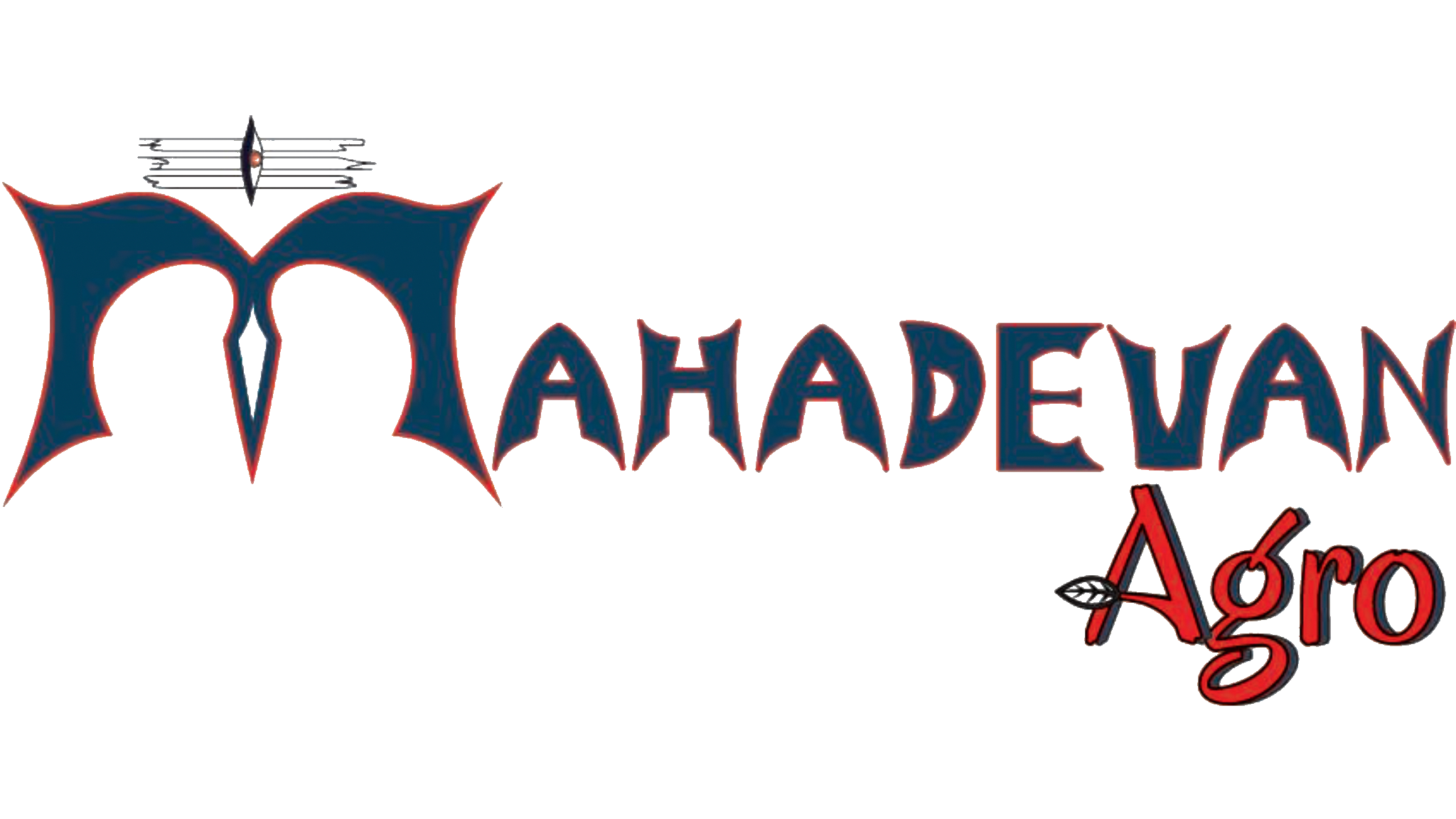




 FRUITS
FRUITS 